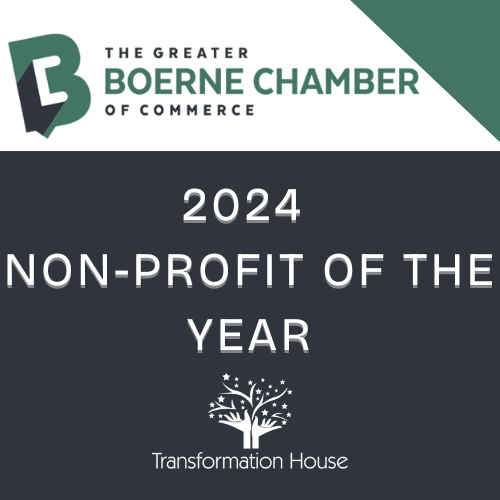Faith Leaders Are Uniquely Positioned to Support Survivors
Theresa Galán-Bruce, DMin, LCSW
Feb. 1, 2024
When I committed to writing a blog about how faith leaders are well-positioned to help stem the epidemic of IPV/DV, it did not seem an insurmountable task. Though faith leaders occupy a privileged place in rural communities, engaging faith leaders around this topic remains an elusive feat and leaves me unsure how to proceed. So, I begin with what I know and that is statistics and stories. I will endeavor to answer the question, “Why is engaging the faith community vital to stemming IPV/DV in rural communities?” Though a myriad of responses can provide an answer, the reality resides in the central role that congregation spaces hold in rural communities.
Faith, religion, and faith-based communities serve as a cornerstone in the lives of many individuals, particularly members of rural regions. As such, faith leaders can play a pivotal role in addressing the epidemic of domestic violence. Research reports that in Texas IPV/DV impacts over 40% of women. Anyone working in the field of IPV/DV would argue that the percentage reaches beyond 40%. The 40% is derived from women who report abuse. Many women do not report the abuse, they remain in the shadows and are not counted as part of the 40% reported. For many women who experience IPV/DV, they subsist in a silo of shame, silence, and subjugation.
Research reports that intimate partner homicide is higher in rural areas as compared to urban. Copious factors contribute to the reality that rural areas present obstacles to safety for women caught in a web of abuse. However, whether residing in urban or rural areas IPV/DV erodes a sense of self and hope and creates a trauma wound that can overwhelm and devastate an individual. For women of faith, their faith leader can be a beacon of light in a world void of hope. In some instances, the faith leader serves as the only voice encouraging a journey toward escape from not only dangerous but life-threatening situations. With the support of the faith leader, a person can take those first steps towards safety.
Faith leaders hold a prominent place in many communities which affords them the ability to serve as important collaborators to work towards the reduction of IPV/DV. Research upholds the reality that women who experience abuse often seek the guidance of their faith community and its leaders. For someone living in the abyss of abuse, hearing a faith leader speak out against IPV/DV can provide them with the strength, courage, and fortitude needed to seek safety. Unfortunately, research aligns with my experience as a person of faith, rarely do faith leaders speak about this epidemic from the pulpit.
What do we hear from the pulpit regarding relationships? The sanctity of marriage, the need for forgiveness, and the importance of the family. While each of these topics remains paramount in the Church and the lives of its members, they cannot eclipse the truth that more than 40% of women suffer in a world of abuse. We have room in our churches to speak to both the sanctity of marriage and admonish IPV/DV. Within a vibrant community filled with people of faith, victims of abuse exist in the shadows alone, unseen, and hopeless. A client once shared, “I felt the most alone in a church filled with individuals…I never heard my story told from the pulpit…all I heard was that God hates divorce.”
Research findings report that many faith leaders feel ill-equipped to assist victims of IPV/DV. The leaders are unsure of how to proceed when a victim seeks out their assistance nor are they aware of the various forms of abuse. While some leaders adhere to certain traditions that uphold the subjugation and oppression of women and lean towards minimizing the experience of abuse, most leaders recognize the abuse for what it is, an affront to God. Many leaders cite their lack of training in this area as a barrier to a more proactive stance. Additionally, many report that they received little to no training in their seminary education on this topic. Rarely did pastor counseling courses address the subject of IPV/DV much less incorporate it into the curriculum. Faith leaders acknowledge their lack of competence in this area, thus occluding their ability to recognize instances of abuse or provide the necessary support when someone comes to them for guidance. For example, a pastor may offer to provide couples counseling, unaware that this places the victim in greater harm and further threatens their safety. Drawing upon research, best practice does not recommend couples counseling when IPV/DV is present or suspected. The Center for Domestic Peace makes an important distinction that couples counseling is beneficial for marital problems and domestic violence is a violent criminal act and not a marital problem. Couple’s counseling is not a panacea when IPV/DV is present. Couple’s counseling places the victim of abuse in great peril. Are pastors aware of this dynamic? Given their lack of training in this area, it is no wonder that pastors find it difficult to navigate such murky waters.
The multifaceted and complex nature of IPV/DV demands a comprehensive approach that includes all members of the community, particularly faith leaders. We must work together to assist communities from congregants to leadership to recognize the ubiquitous nature of IPV/DV. A failure to acknowledge the IPV/DV epidemic can uphold cultures that not only deny abuse but blame the victims which can have devastating effects. Attitudes that shape the culture of any faith community can either serve to perpetuate violence or stem it. As noted, rarely do leaders speak openly about IPV/DV. Though difficult, leaders can begin to speak about the reality of IPV/DV to the community, they can invite experts in the field to come speak to different groups in the community and openly collaborate with IPV/DV advocates and shelters. These few steps can serve as a lifeline for the woman who sits alone in the pews each Sunday. How affirmed would she feel to hear her leader speak against the horrors of this abuse?


